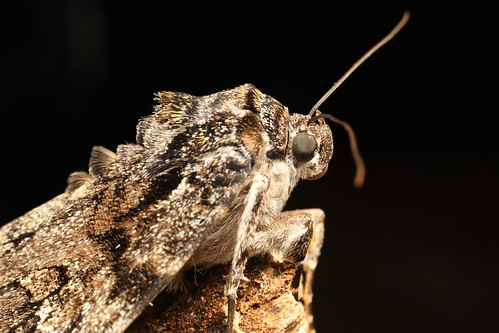ไม่ใช่มอดธรรมดา, แต่หน้าตาโดดเด่น. นี่คือ catocala ilia (Erebidae) ((เดิมชื่อ Noctuidae)), และมันกินต้นโอ๊คจำนวนหนึ่ง. มันเข้ามาในความคิดของฉันในช่วงสุดสัปดาห์ในรัฐอิลลินอยส์ใต้, ลงในป่าแห่งรัฐ Trail of Tears. เช่นเดียวกับแมลงเม่าชนิดอื่นๆ อีกจำนวนมาก สปีชีส์ที่แพร่หลายนี้มีหลายรูปแบบที่อาจแตกต่างออกไป – อยู่ระหว่างการพิจารณาเอกสารของสายพันธุ์…
ตอนนี้ฉันได้เก็บภาพผีเสื้อกลางคืนดีๆ ไว้จำนวนหนึ่งแล้ว ดังนั้นคาดว่าจะมีผีเสื้อกลางคืนในวันจันทร์มากกว่านี้! (ทั้งที่เป็นมอดของวันศุกร์).


How can I resist a post title such as yours? A monograph? Whom, pray-tell, might be publishing such a useful work? =)
Ignoring the otherwise very moth-y appearance of your highlighted moth, in isolation, it’s antennae would certainly have me scratching my head when going through my VERY crude “moth-or-butterfly” examination. ดังนั้น, are the tips of the antennae the same width as the rest, generally, no bulb or some such? And feel free to edify if I’m off base. =) I know if I see feathered I think moth, and if I see a bulb or other larger-then-rest-of-antennae blob at the terminus, I think butterfly. Can you clarify/correct/confirm that and apply to this individual?
ขอบคุณ, and looking forward to subsequent posts.
ugh, WHO, not whom. pardon. =)